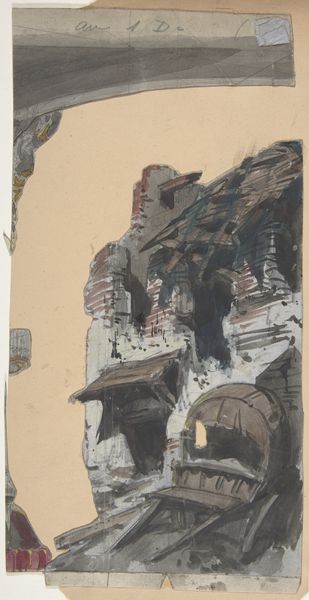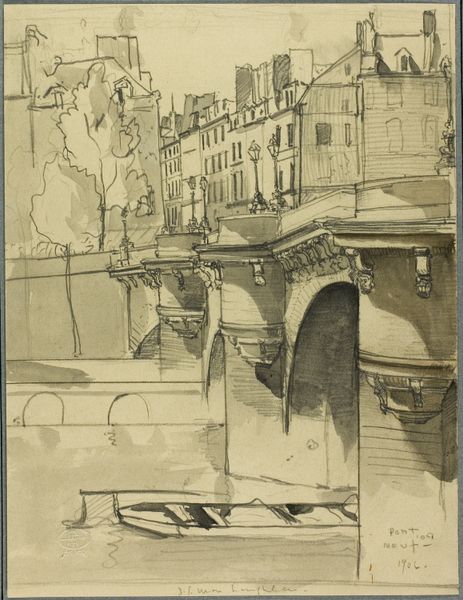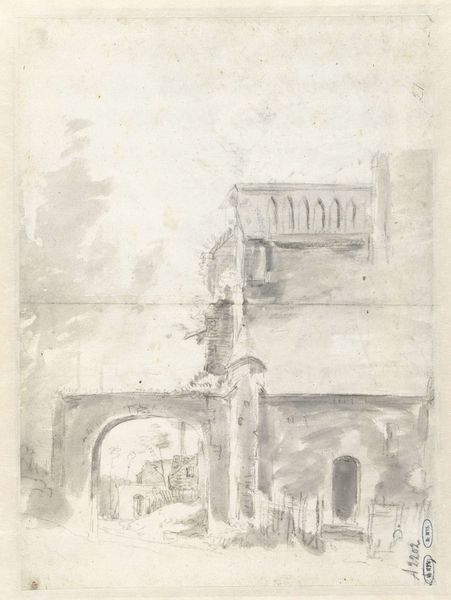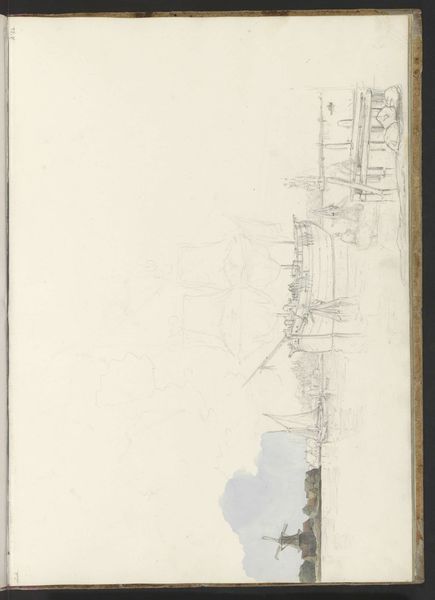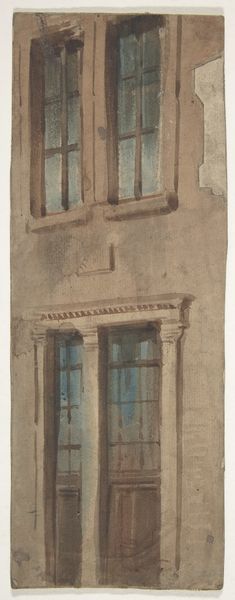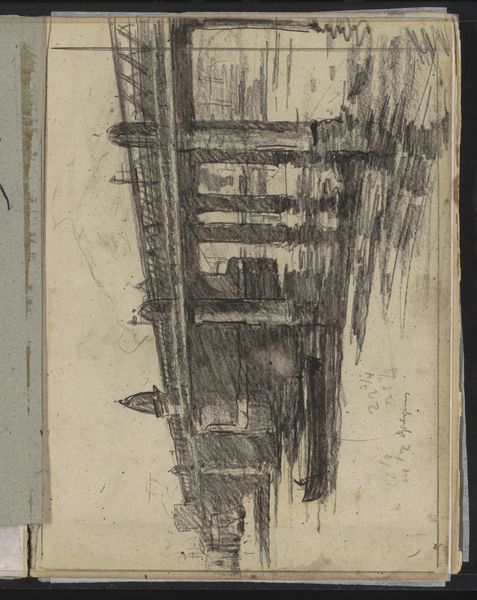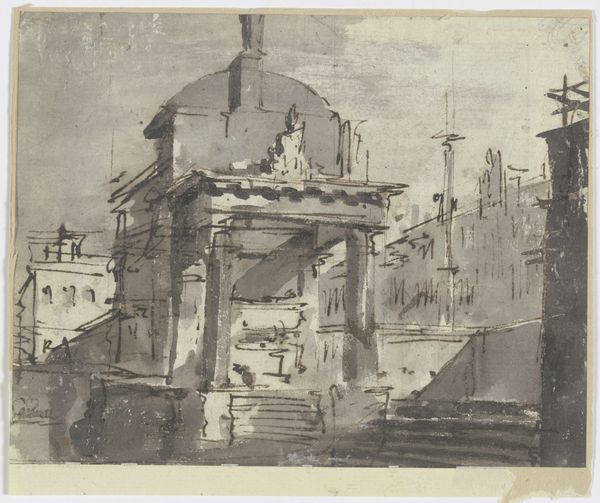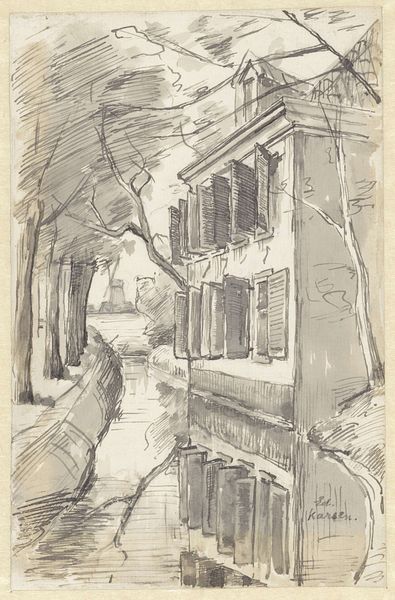
Design for a Stage Set at the Opéra, Paris 1830 - 1890
0:00
0:00
Dimensions: Irregular sheet: 11 7/16 x 5 11/16 in. (29 x 14.5 cm)
Copyright: Public Domain
Editor: This is Eugène Cicéri's "Design for a Stage Set at the Opéra, Paris," created sometime between 1830 and 1890, rendered in watercolor, charcoal and print. The scene has an incredible theatrical quality, like you could step right into the scene. What strikes you most about this design? Curator: For me, this isn’t just a stage set; it's a glimpse into the socio-political landscape of 19th-century Paris. Consider the Opéra itself—a grand symbol of power and bourgeois entertainment. How does this romantic landscape, with its architectural decay, play with or perhaps subvert the opulent expectations of the opera-going audience? Editor: I see what you mean! The crumbling architecture does seem at odds with the lavishness you'd expect. But in what way would this specific stage set challenge the social norms of its time? Curator: Think about Romanticism's fascination with ruins and the past, often idealized. Stage design allowed for social commentary under the veil of spectacle. Are we seeing here a subtle critique of progress? Maybe a commentary on the impermanence of power itself, especially poignant during a period of rapid social change and revolution in France? What does this visual "collapsing" mean in this particular historical moment? Editor: I never considered that! I was so focused on the aesthetic that I missed its potential as a statement on society. Curator: Precisely! And note how the very medium – watercolor, charcoal and print - contrasts with oil paintings, typically seen as “high art” in that period. Could the combination be an attempt to democratize art or offer a more accessible form of visual expression? Editor: That’s a compelling argument. Thinking about it in terms of accessibility shifts my understanding completely. Thank you! Curator: And thank you, this dialogue enriches our interpretation of art and broadens its relevance beyond aesthetics.
Comments
No comments
Be the first to comment and join the conversation on the ultimate creative platform.
